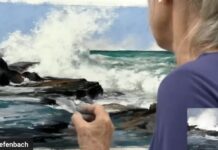The following is part of a series featuring a leader in the art community who will be joining us on the faculty of Watercolor Live, a virtual art conference taking place January 24-26, 2024.
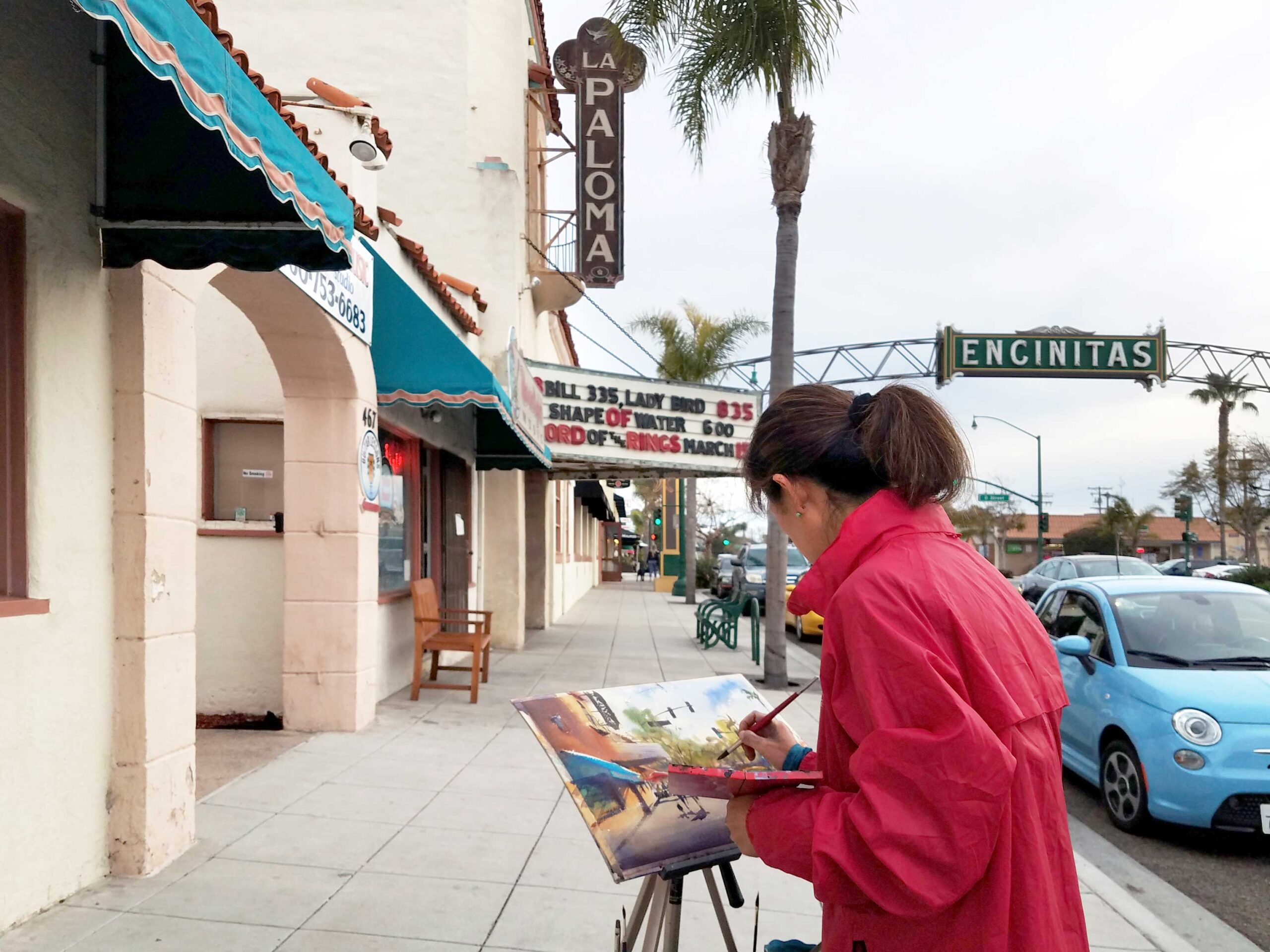
Watercolor Demo: Focus on Big Shapes and Contrasts
by Keiko Tanabe
Step 1
To start, I sketch out the scene on my watercolor paper. I try to identify the bigger shapes first, then the smaller ones, but I don’t feel the need to draw everything I see. For example, I don’t see anything here in the trees that I need to add. Anything that has a contrast, however, I draw, because I have to be careful of the light and dark areas, and make sure I get those right. If two adjoining objects don’t have much contrast, I don’t feel the need to draw them.
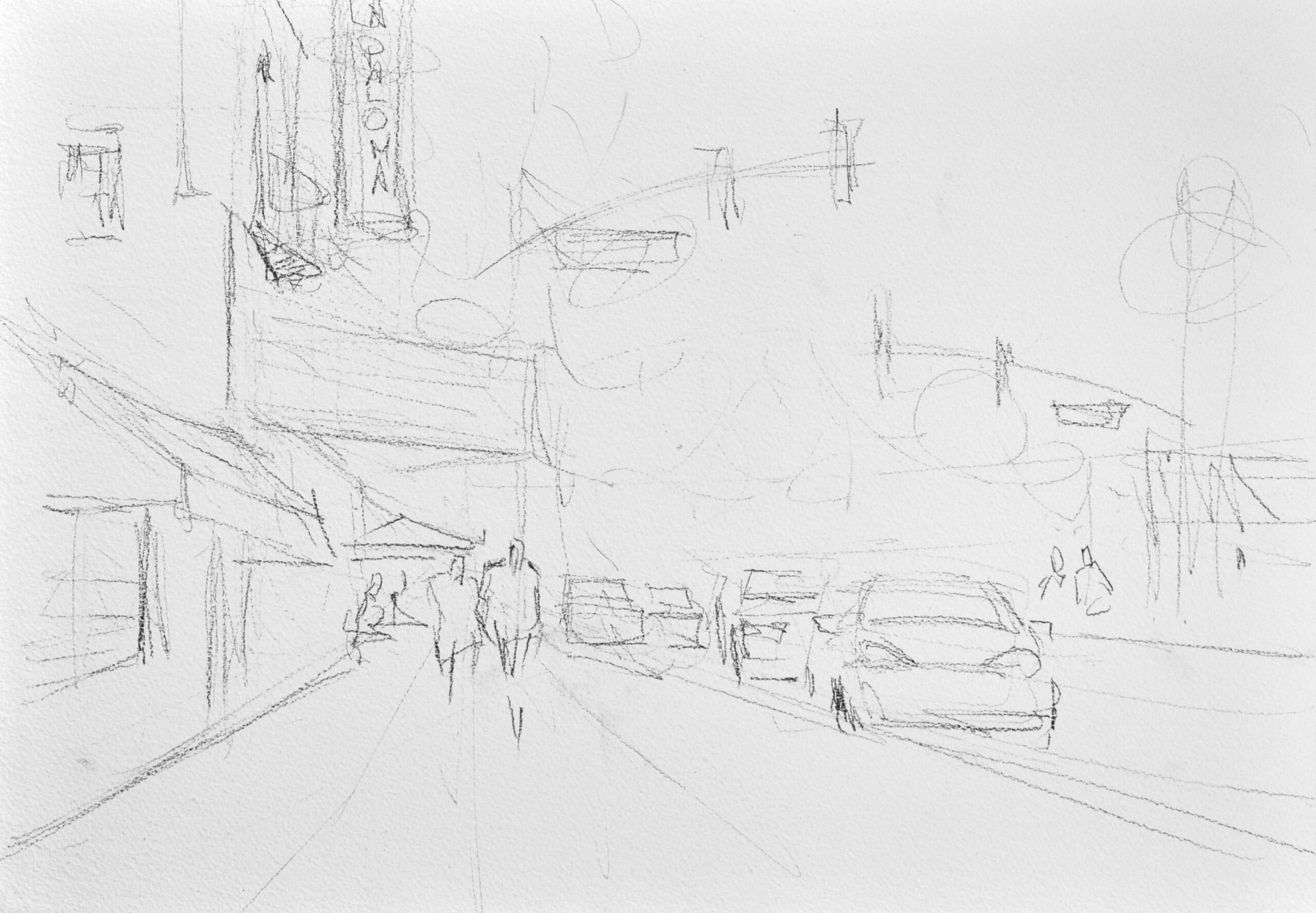
Step 2
Before I apply my first wash, the first thing I have to think about is where to save my whites, because I don’t use masking fluid. Those are the only areas I have to be careful about; otherwise, I just put in color. I don’t necessarily wet the paper first, but I work quickly, so I start using a different color before the first one is dry.
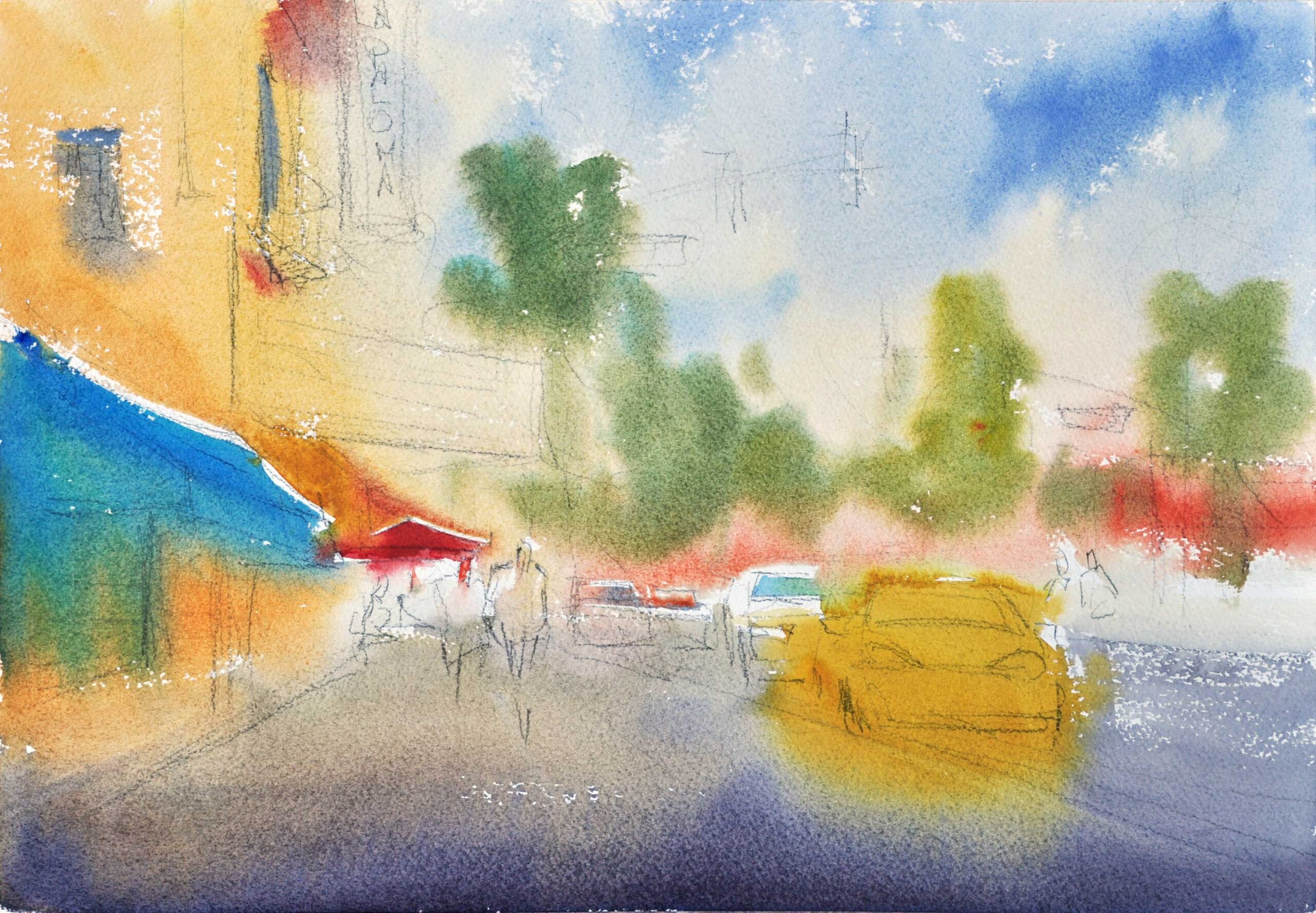
Step 3
At this stage, I start adding my dark values and connecting them. In the first wash, I use many colors, but once I start applying my darks, I don’t change colors too much. My darks are all mixed; they’re never a single color. I think about color temperature — is this area warm or is it cool? — without altering the color very much.
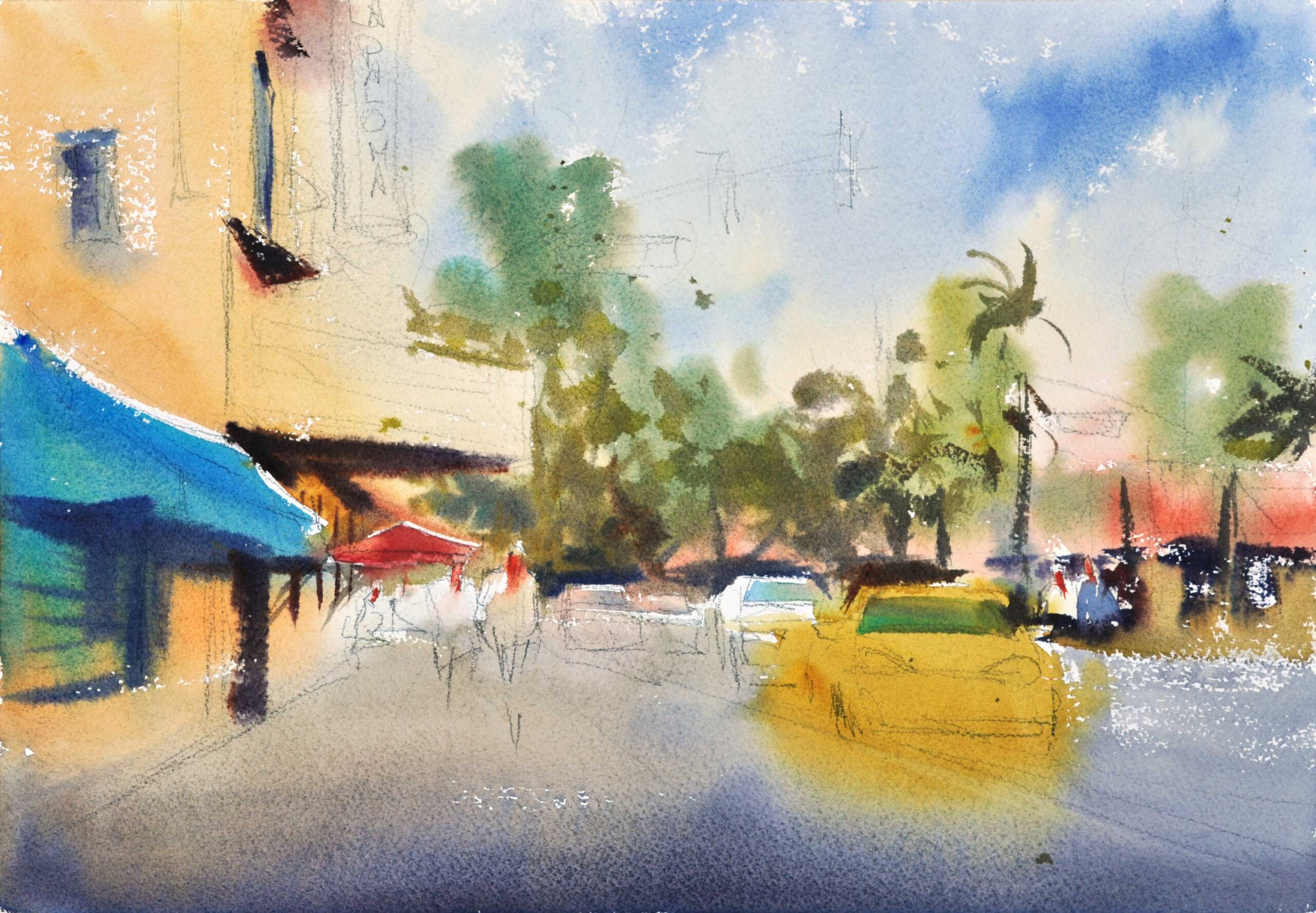
Step 4
At this stage, I start to focus on the small details. I keep adding darks and trying to make connections. I forget about reality at this point. I don’t look at my subject anymore; I just look at my painting. I think about what’s missing or what needs to be corrected.
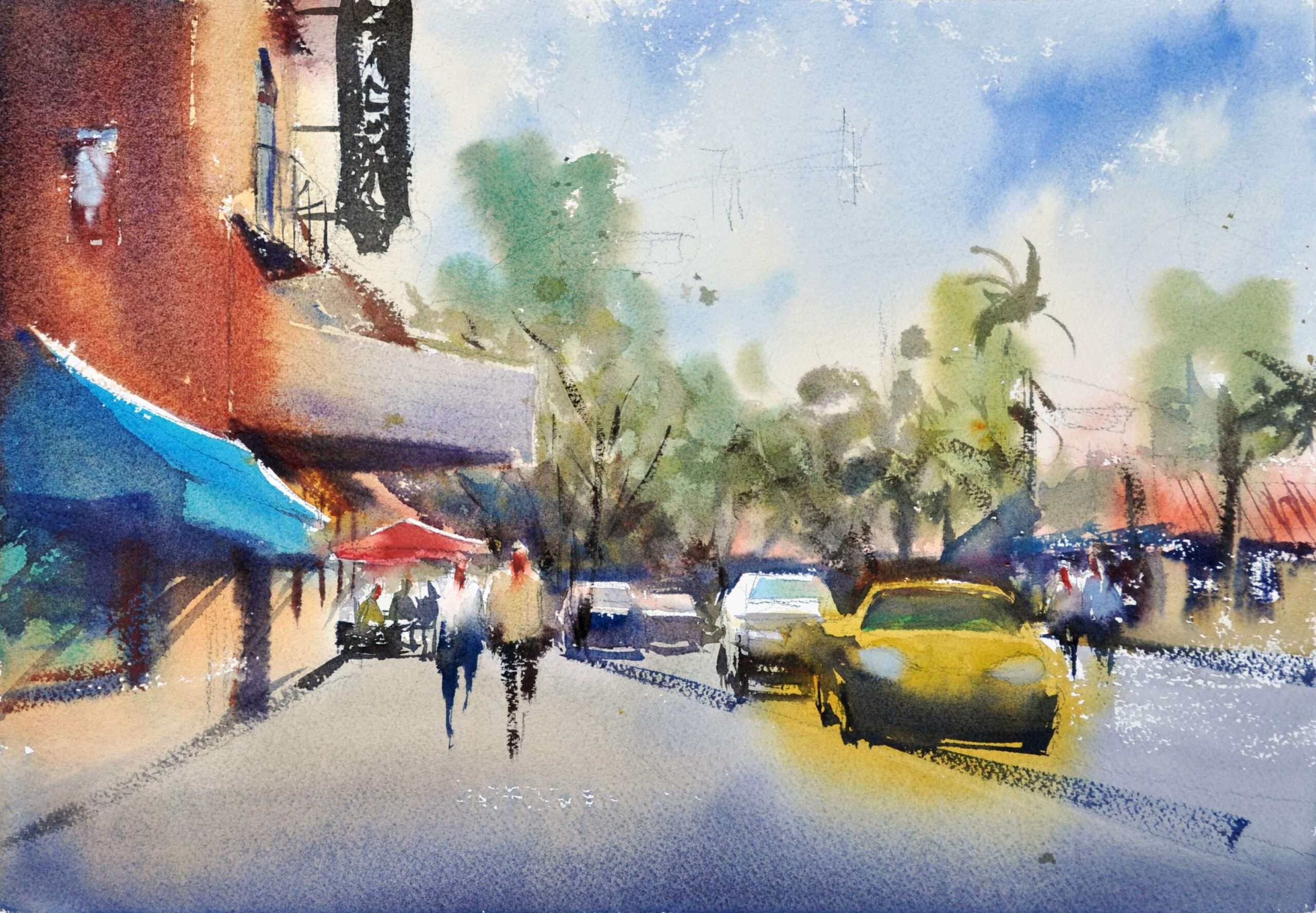
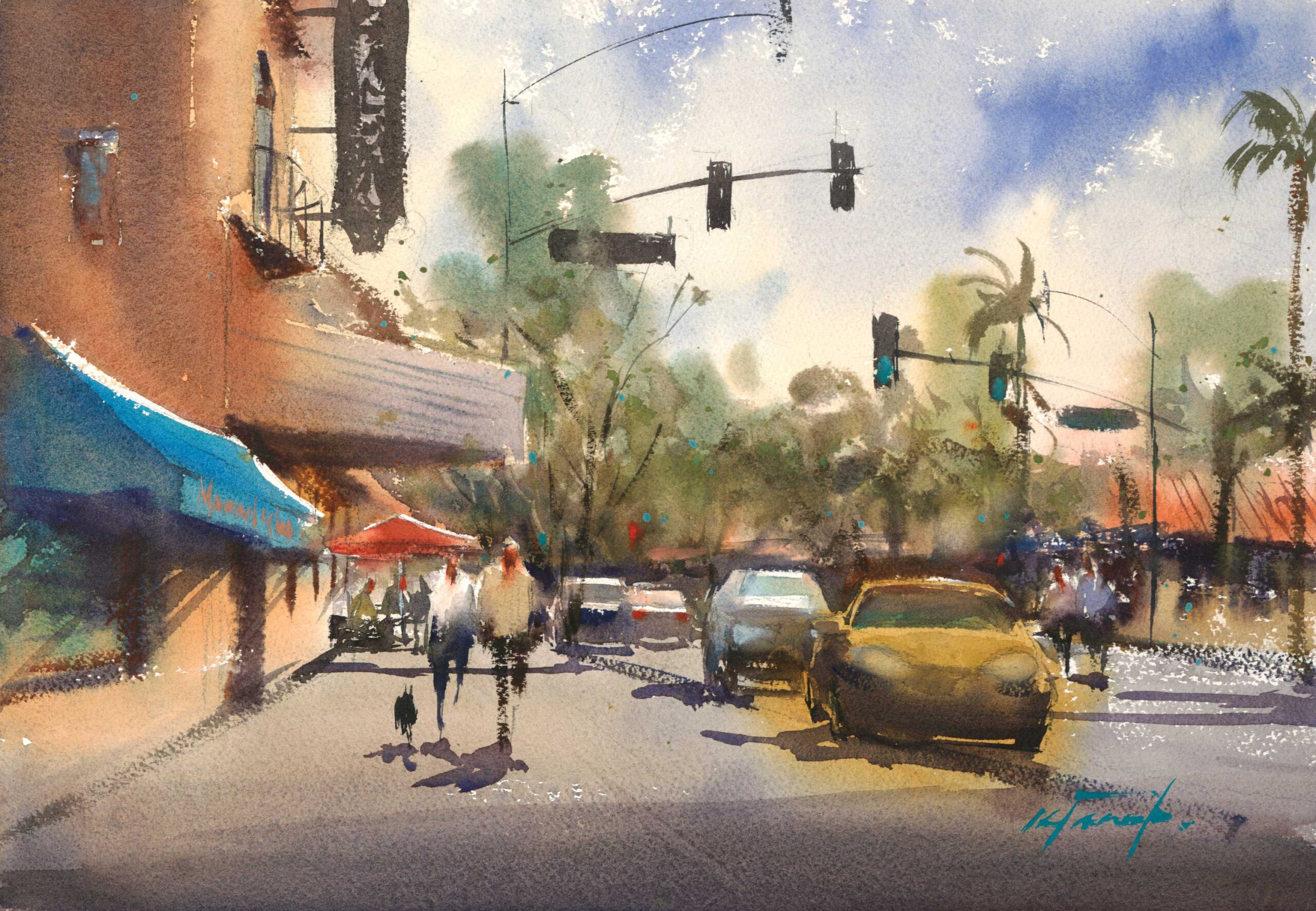
Keiko’s Watercolor Toolkit:
Surface: Rough or cold-pressed Arches paper
Brushes: Escoda Ultimo synthetic round (No. 20 or larger) or an Isabey squirrel hair quill for the first wash; after that, she may switch to a firmer synthetic round, such as Escoda Perla (Nos. 12 to 20), to paint with more precision and to add details, plus a Japanese calligraphy brush and a small liner for special strokes and edges
Paints: Primarily Winsor & Newton: French ultramarine, cobalt blue, permanent alizarin crimson, cadmium red, yellow ochre, lemon yellow, burnt sienna, burnt umber, Winsor orange, viridian, cobalt turquoise, and Winsor violet
***
Thursday, December 7, 2023, 3pm EST: Join us for a FREE Roundtable Discussion with John Salminen and Barbara Nechis: “A Watercolor Artist’s Guide to Confidence, Success and Artistic Growth,” hosted by Eric Rhoads and Kelly Kane – Register here!
More Helpful Links
- Visit Keiko Tanabe’s website
- Learn from Keiko during the 2024 Watercolor Live online art conference
- Browse art video workshops on how to paint with watercolor
And browse more free articles here at OutdoorPainter.com

